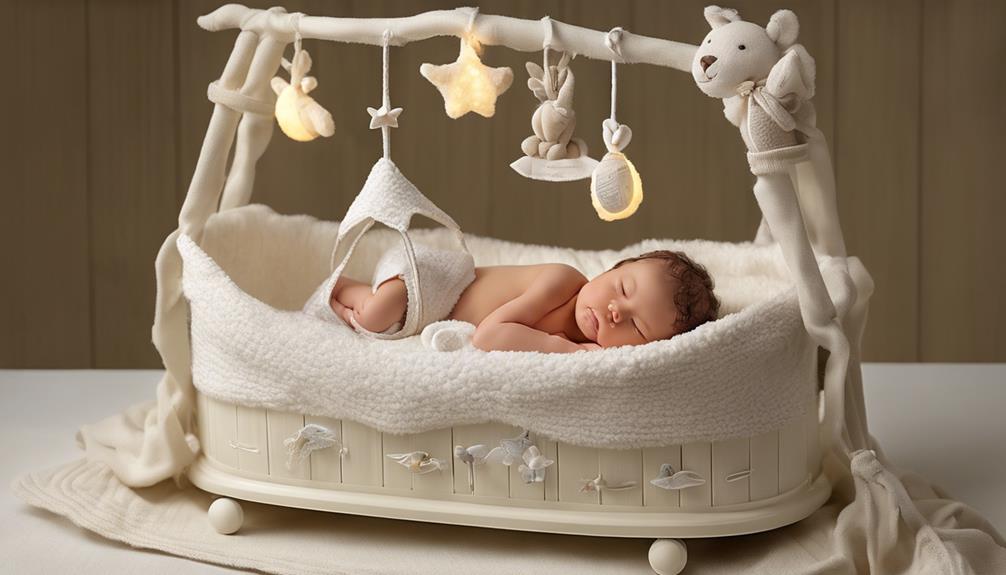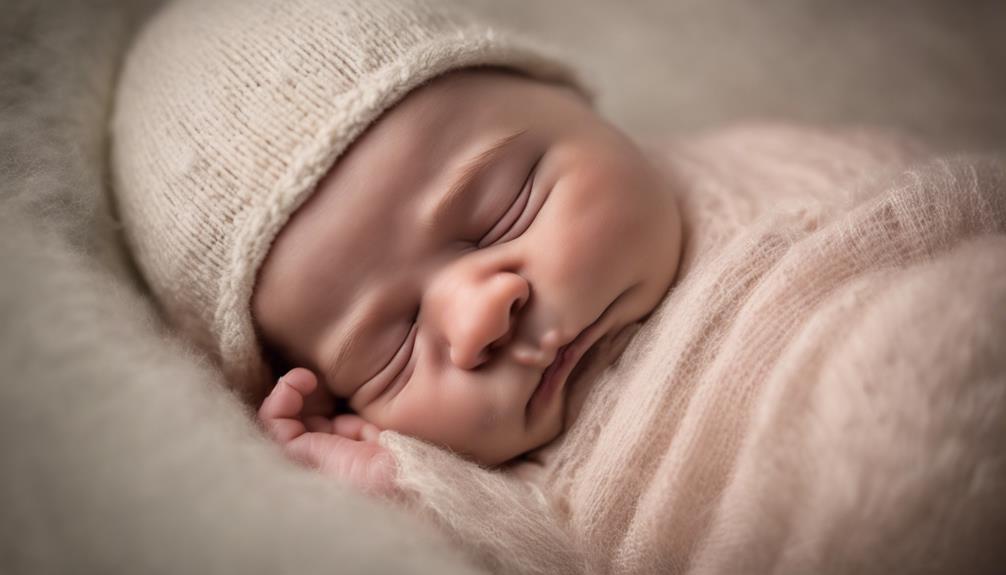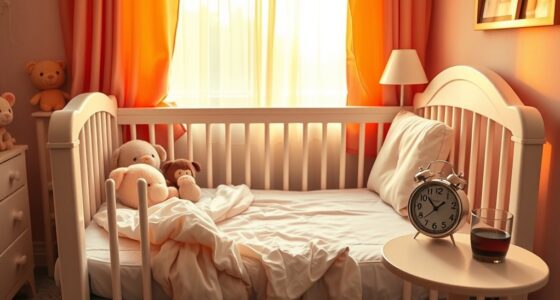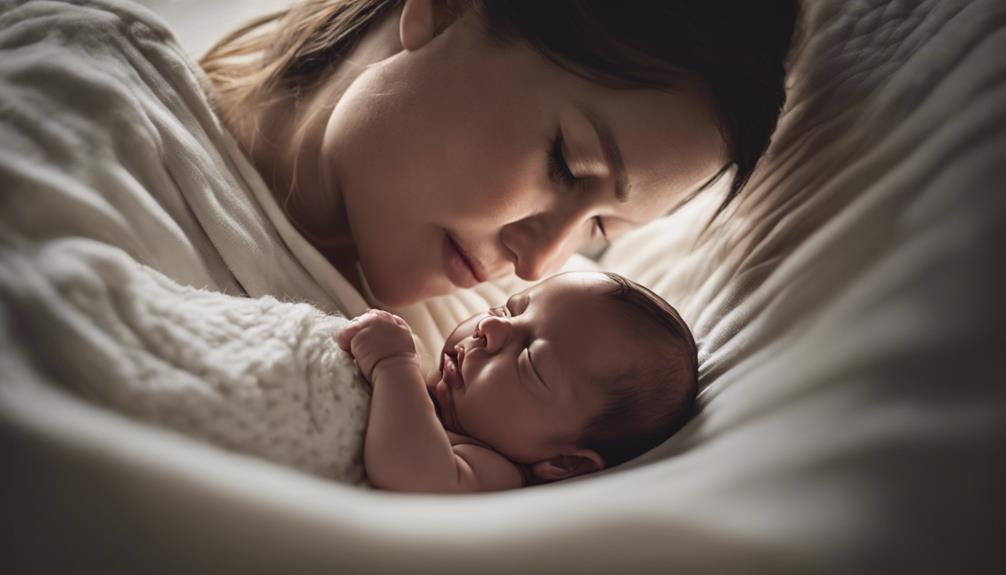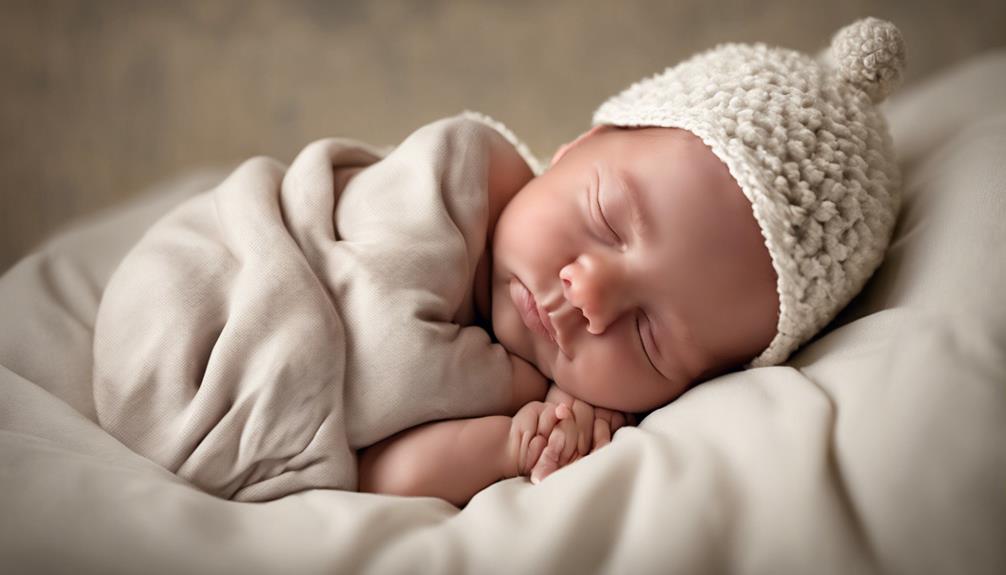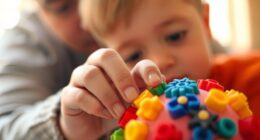As parents, we all know the struggle of trying to get our newborn to sleep peacefully in their crib from the very beginning. It can be a challenging journey, but with ten essential tips at your disposal, you can pave the way for a smoother change into crib sleeping for your little one.
From establishing a consistent bedtime routine to ensuring a safe sleep environment, these strategies can make a significant difference in your newborn's sleep habits. So, let's explore these tips together and discover how they can help your baby settle into their crib for a restful night's sleep.
Key Takeaways
- Establish a calming bedtime routine to signal sleep time.
- Create a safe and calm sleep environment in the crib.
- Use white noise for soothing and uninterrupted sleep.
- Swaddle your baby for comfort and mimic womb environment.
Establishing a Consistent Bedtime Routine
To help your newborn adjust to sleeping in their crib, we recommend establishing a consistent bedtime routine that includes calming activities to signal bedtime.
Placing your baby in the crib at the first signs of drowsiness can help them associate the crib with sleep. Before bedtime, make sure all your baby's needs like feeding or diaper changes are taken care of, so they can settle peacefully into the crib.
Maintaining a comfortable room temperature in the crib to promote better sleep is crucial. Consider incorporating soothing sounds like white noise to create a calming environment conducive to sleep in the crib.
Most importantly, stick to a consistent bedtime routine with activities such as a warm bath, gentle massage, soothing lullabies, or bedtime stories. These rituals will help your baby recognize when it's time to wind down and prepare for a restful night's sleep in their crib.
Creating a Calm Sleep Environment
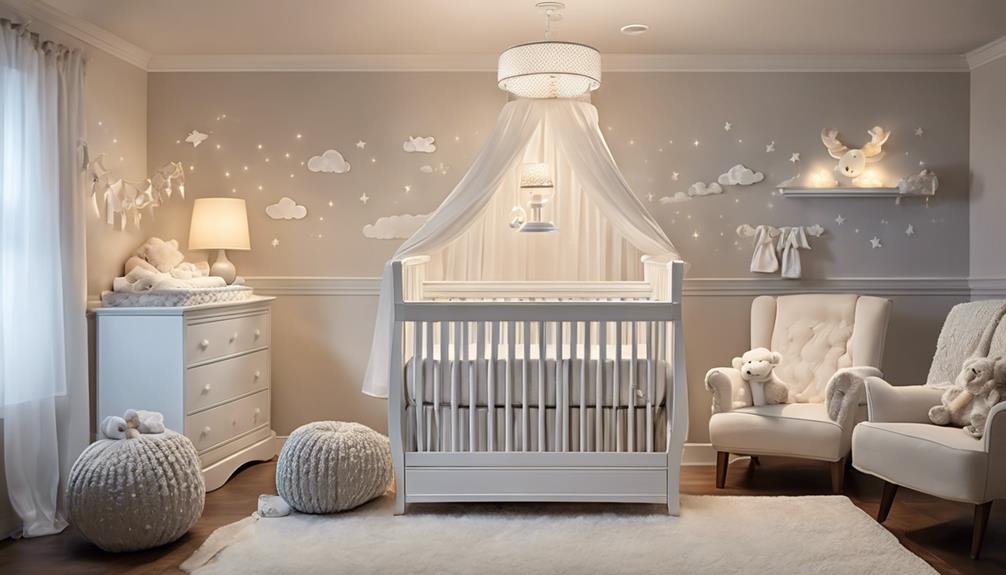
Creating a serene sleep environment for your newborn in the crib involves ensuring the mattress is firm and the sheets fit snugly to provide safety and comfort.
It is crucial to keep the crib free of blankets, pillows, stuffed animals, and bumpers to reduce the risk of suffocation.
Maintaining a comfortable room temperature between 68-72 degrees Fahrenheit promotes better sleep for your baby. Avoid using loose bedding or soft items in the crib to prevent potential hazards during sleep.
Additionally, consider using a monitor to supervise your baby while they sleep in the crib for added peace of mind.
Using White Noise for Soothing
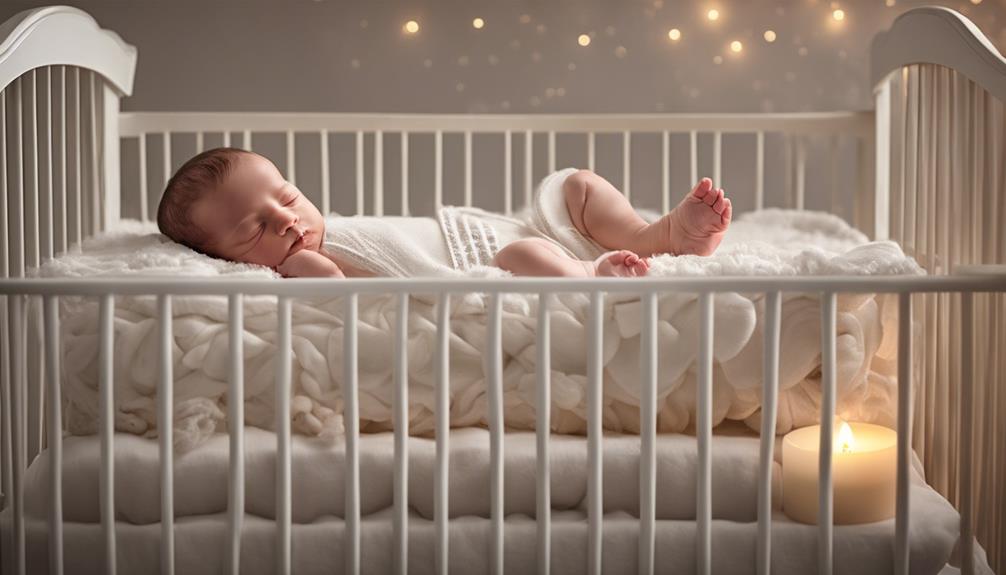
White noise can be a game-changer for newborns, mimicking the comforting sounds of the womb and aiding in better sleep. It helps drown out background noises, ensuring a more peaceful slumber for your little one.
When choosing white noise equipment, opt for options that offer a consistent and gentle sound to promote a soothing environment for your baby's crib.
White Noise Benefits
With the familiarity and comfort it provides, white noise serves as a soothing backdrop for newborns, aiding in their peaceful sleep. Newborns can benefit notably from white noise, as it mimics the sounds heard in the womb, creating a comforting environment that promotes relaxation.
By using white noise, you can effectively drown out disruptive background noises, helping your baby achieve a more restful sleep. This consistent auditory backdrop not only helps babies fall asleep faster but also encourages them to stay asleep longer.
Additionally, white noise can mask sudden noises that might startle your newborn, leading to more uninterrupted sleep. Incorporating white noise into your baby's bedtime routine can serve as a signal that it's time to sleep, facilitating a smoother passage into restful slumber.
Proper White Noise
For a calming and soothing environment in your newborn's crib, consider incorporating white noise to help promote restful sleep. White noise can mimic the sounds babies hear in the womb, offering a sense of familiarity and comfort in the crib.
Here are some tips to help you use white noise effectively:
- Choose white noise machines or apps that offer a variety of sounds like rain, ocean waves, or heartbeat to find what soothes your baby best.
- Use white noise consistently in the crib to create a sleep association that signals bedtime, aiding newborns in moving to sleep more easily.
- White noise can mask environmental disruptions, providing a consistent sleep environment for newborns and promoting longer, more restful sleep.
White Noise Equipment
To enhance your newborn's sleep environment, exploring different white noise equipment options can be a beneficial step in creating a soothing atmosphere for your little one. White noise machines are excellent tools for masking background noise, helping your baby achieve better sleep by mimicking familiar sounds from the womb.
These machines also aid in drowning out sudden noises that might disrupt your baby's sleep, allowing them to rest more peacefully. Additionally, incorporating white noise into your bedtime routine can signal to your baby that it's time to sleep, assisting in establishing a consistent sleep schedule.
With various forms of white noise equipment available, such as machines, apps, or devices, you have the flexibility to create a calming sleep environment tailored to your newborn's needs.
Swaddling for Comfort
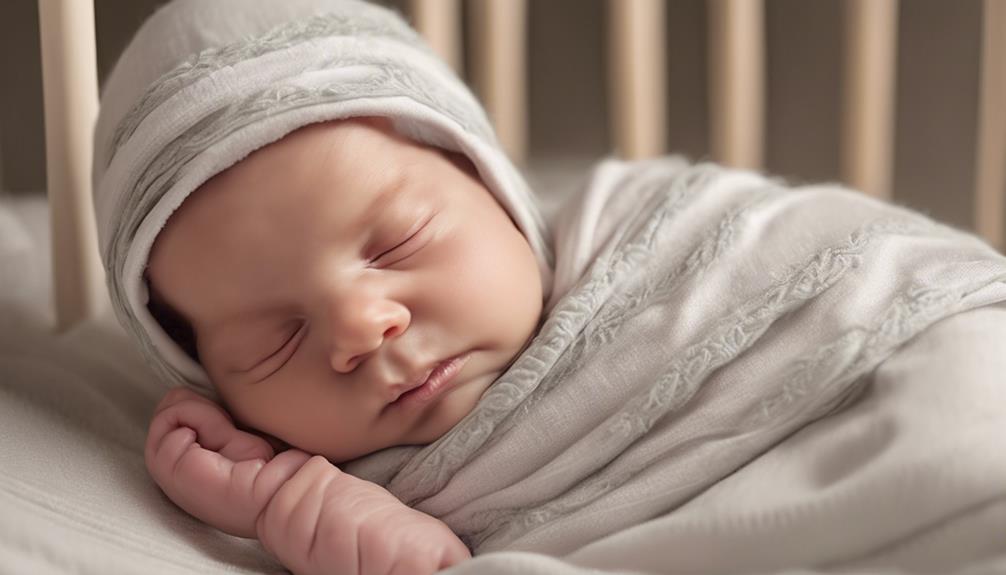
When it comes to swaddling for comfort, we grasp the significance of getting it just right. Proper techniques guarantee your little one feels snug and secure, helping them settle down for a peaceful sleep in their crib.
Let's explore the benefits of swaddling, how to do it safely, and when it's time to move away from swaddling.
Swaddling Techniques
Swaddling your newborn properly is essential for creating a cozy and secure environment that promotes better sleep and comfort. When swaddling your little one, remember these key points:
- Snug but not tight: Wrap your baby securely but guarantee it's not too tight, allowing for gentle movement.
- Prevent startle reflex: Swaddling helps prevent sudden movements that can disrupt sleep, promoting longer and more peaceful rest periods.
- Encourage self-soothing: Swaddling can aid in reducing crying episodes and assist newborns in learning to self-soothe.
Benefits of Swaddling
As parents, we understand the importance of swaddling for our newborns' comfort and sleep quality. Swaddling helps our little ones feel secure and mimics the cozy environment of the womb, promoting better sleep.
It prevents the startle reflex that often disrupts their rest, leading to longer and more restful sleep periods. Additionally, swaddling can reduce crying and fussiness by providing a comforting sensation of being held.
Ensuring important swaddling techniques, such as snugly wrapping a blanket around the baby's body, is vital to maintaining a balance where they aren't overheated or restricted.
Safety Measures
For newborns shifting to sleeping in a crib, guaranteeing safety measures while swaddling for comfort is essential. Swaddling offers a cozy environment that mimics the feeling of being held, promoting better sleep in the crib. To guarantee safety and comfort, consider the following:
- Use a lightweight, breathable fabric for swaddling to prevent overheating.
- Make sure the swaddle is snug but not too tight to allow for healthy hip development.
- Always place the swaddled newborn on their back to reduce the risk of Sudden Infant Death Syndrome (SIDS).
Utilizing a Baby Monitor
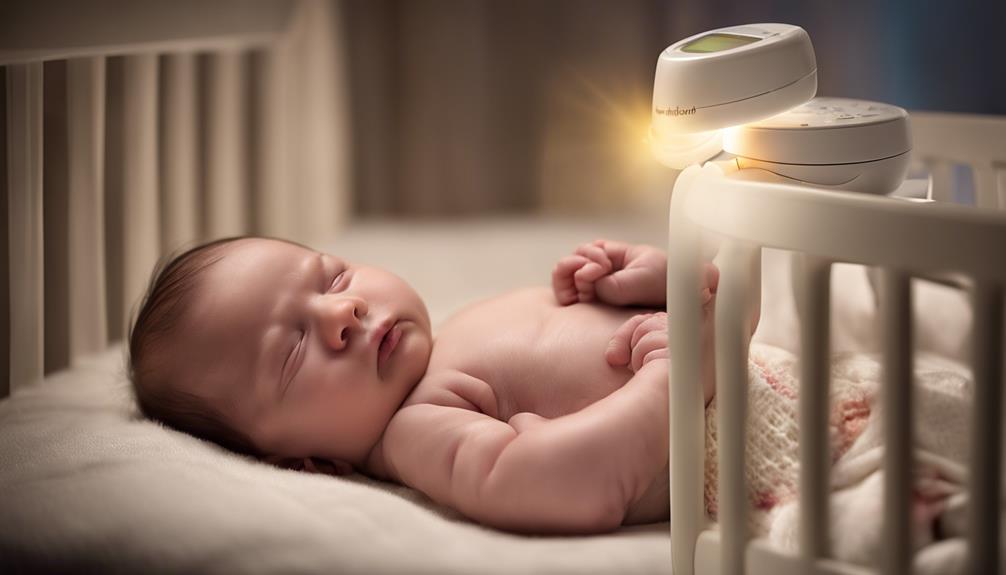
When setting up your newborn's sleep environment, incorporating a baby monitor can provide invaluable peace of mind and convenience. Baby monitors offer real-time monitoring with features like temperature sensors to guarantee a comfortable sleep setting for your little one.
With two-way audio capabilities, you can comfort your baby from a distance without disrupting their rest. Additionally, many modern baby monitors are equipped with night vision, providing clear visuals even in low light conditions, allowing you to check on your baby without disturbing their sleep.
Some advanced monitors can even track your baby's sleep patterns, offering insights to help establish better sleep routines. By utilizing these features, you can create a secure and nurturing sleep environment for your newborn, while also giving yourself the reassurance that you can monitor them closely, even when you're not in the same room.
Gradual Transition to the Crib
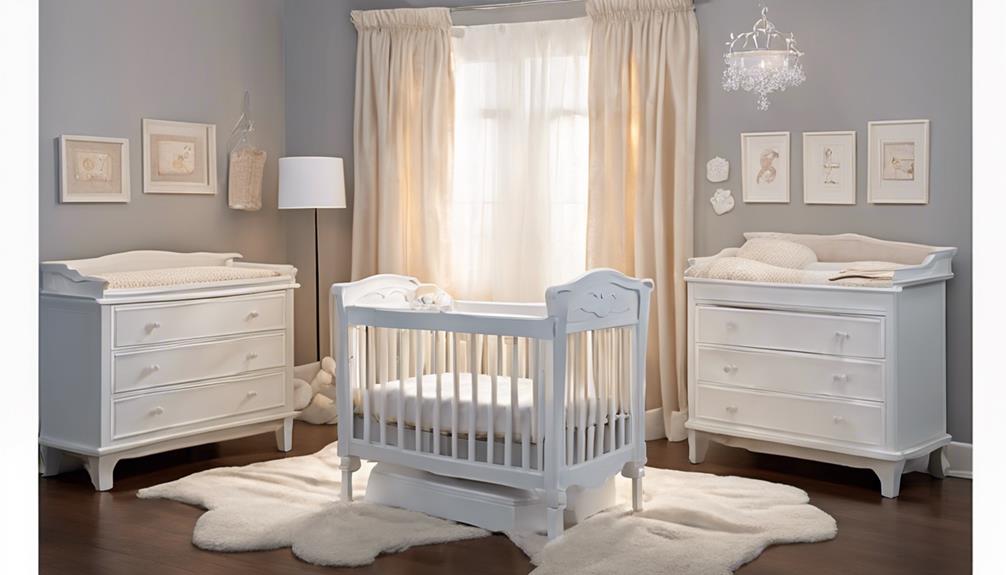
When moving your newborn to the crib, creating a quiet sleep environment can work wonders for their rest. Familiar bedding and smells can provide a sense of comfort and security, aiding in the change process.
Utilizing white noise can also help mask any sudden noises that might startle your baby during sleep.
Quiet Sleep Environment
Creating a peaceful sleep environment for your newborn involves gently introducing the crib during nap times to help them get accustomed to their new sleeping space.
Here are some tips to create a quiet sleep environment for your little one:
- Keep the room dark and quiet at night to promote better sleep in the crib.
- Use a warm blanket or heat pad to warm up the crib before placing the baby to make it cozy.
- Incorporate white noise as a soothing background sound to help newborns adjust to sleeping in the crib.
Familiar Bedding and Smells
To help your newborn adjust to sleeping in the crib, gradually introduce familiar bedding and scents that provide comfort during the adjustment process. Familiar items such as bedding, sleep sacks, or swaddles with your baby's scent can create a reassuring environment in the crib. Placing a worn shirt or blanket with your scent near the baby offers a sense of security. Consider starting with naps in the crib before shifting to overnight sleep to ease the process. Maintaining consistent smells and bedding will help in creating a comforting atmosphere for your newborn as they adapt to the crib. Below is a table summarizing ways to incorporate familiar bedding and smells during the crib adjustment:
| Familiar Bedding and Smells | Tips |
|---|---|
| Bedding with baby's scent | Create a reassuring environment. |
| Worn shirt or blanket with your scent | Provide a sense of security. |
| Shifting with naps first | Ease the adjustment to overnight sleep. |
| Consistent smells and bedding | Establish a comforting crib environment. |
Use White Noise
Introducing white noise can be a soothing way to help newborns adjust to sleeping in their crib. Here are some tips to contemplate:
- White noise mimics sounds babies hear in the womb, promoting better sleep in the crib.
- Gradually introducing white noise eases babies into new sleep environments, aiding in the shift to the crib.
- The consistent sound of white noise masks sudden noises that might startle newborns, supporting uninterrupted sleep.
Implementing a Feeding Schedule

Establishing a feeding schedule for your newborn is essential for their growth and development. Paying attention to your baby's cues and hunger signals is critical in determining when they need to eat. Newborns typically require 8-12 feedings within a 24-hour period, so aim for feeding every 2-3 hours, even during nighttime.
It's important to monitor your baby's weight gain and diaper output to make sure they're getting enough nourishment. If you encounter challenges or have questions about feeding, consider reaching out to a lactation consultant or pediatrician for professional support and guidance. These experts can provide valuable advice tailored to your specific situation, helping you navigate any difficulties you might encounter.
Encouraging Self-Soothing Techniques
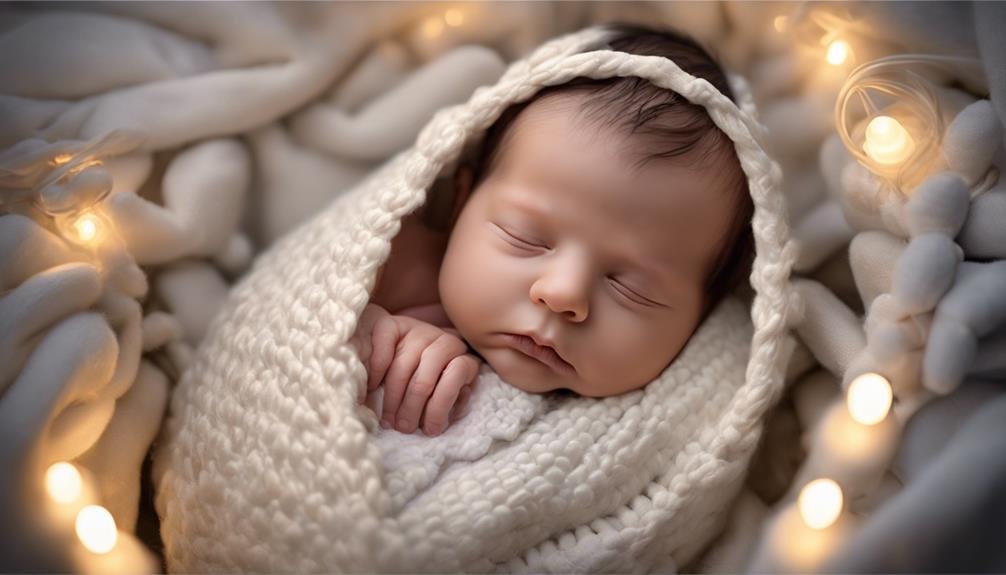
Encouraging your baby to develop self-soothing techniques can enhance their ability to fall back asleep independently. By gently supporting your little one in learning these skills, you're setting the foundation for longer stretches of sleep and promoting better rest for both of you.
Here are some key ways to encourage your baby's self-soothing abilities:
- Create a safe and comforting environment: Confirm the crib is a cozy and secure space where your baby feels calm and protected.
- Consistent bedtime routine: Establishing a soothing bedtime routine helps signal to your baby that it's time to wind down and prepare for sleep.
- Gradual independence: Encourage your baby to self-soothe by giving them a moment to calm themselves before intervening.
Keeping Room Temperature Optimal
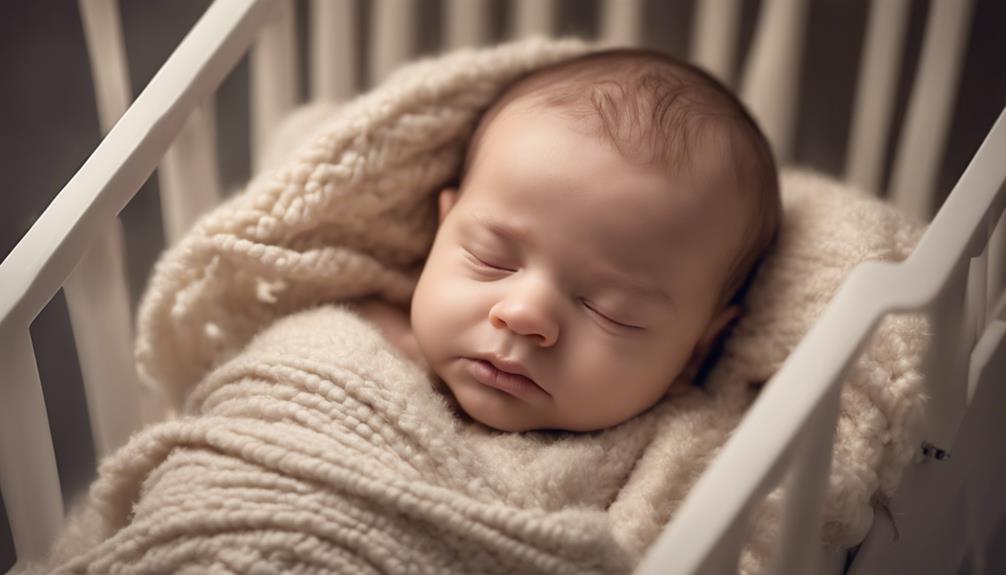
After making sure your baby's crib is a cozy haven, maintaining an ideal room temperature is important for promoting restful sleep. It's vital to keep the room temperature ideal to create a comfortable sleep environment for your newborn in the crib. The recommended room temperature for newborns is between 68-72 degrees Fahrenheit. Extreme temperatures can disrupt your baby's sleep pattern and overall comfort, so it's crucial to monitor and adjust the temperature accordingly.
To help you manage the room temperature effectively, consider using a room thermometer. This simple tool can assist you in making sure that the temperature in the nursery falls within the ideal range. By regulating the room temperature, you can help your newborn regulate their body temperature, leading to better sleep quality and overall well-being.
Here is a table summarizing the key points about maintaining the ideal room temperature for your newborn in the crib:
| Key Points | Details |
|---|---|
| Ideal Temperature Range | 68-72 degrees Fahrenheit |
| Importance | Regulates baby's body temperature for better sleep |
| Disruptions | Extreme temperatures can disrupt sleep patterns and overall comfort in the crib |
| Monitoring | Use a room thermometer to monitor and adjust the temperature to make sure it falls within the recommended range |
Ensuring Safe Sleep Practices
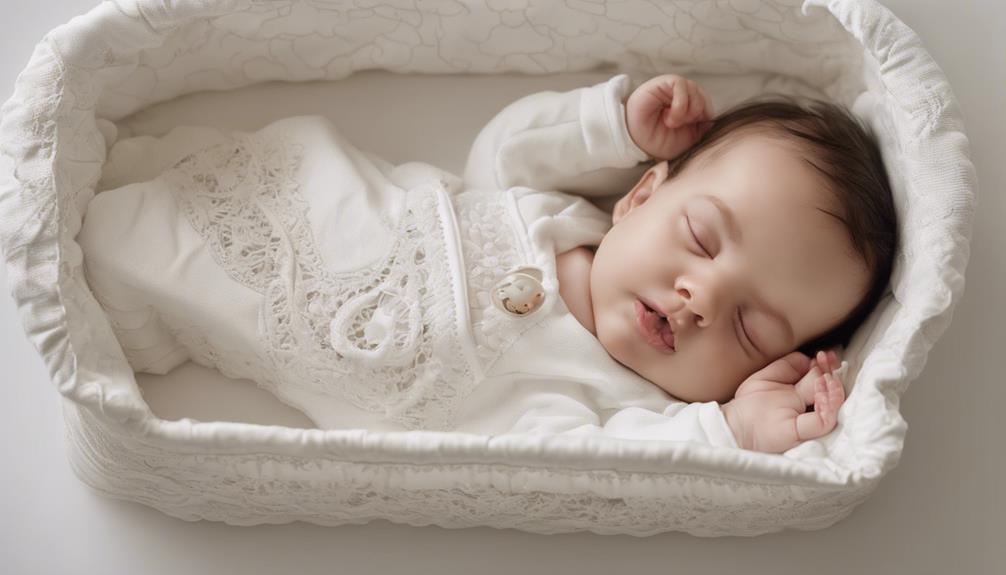
To guarantee your newborn's safety during sleep, always remember to place them on their back in the crib to lessen the risk of Sudden Infant Death Syndrome (SIDS).
Choose a firm crib mattress with a fitted sheet to prevent suffocation hazards.
Avoid adding loose bedding, stuffed animals, or pillows in the crib to create a safe sleep environment for your newborn.
It's important to make sure the room temperature remains between 68-72 degrees Fahrenheit for best sleep conditions in the crib.
Additionally, regularly check and follow crib safety standards to protect your newborn while they sleep.
By adhering to these safe sleep practices, you can provide a secure and comfortable environment for your little one.
Conclusion
By following these 10 tips for newborns sleeping in a crib right away, parents can create a peaceful and safe sleep environment for their little ones.
Remember, consistency is key in establishing a bedtime routine that works for both baby and parents.
Soothing sounds, swaddling, and safe sleep practices are all essential for promoting healthy sleep habits from day one.
Let's work towards making bedtime a stress-free and enjoyable experience for the whole family.
